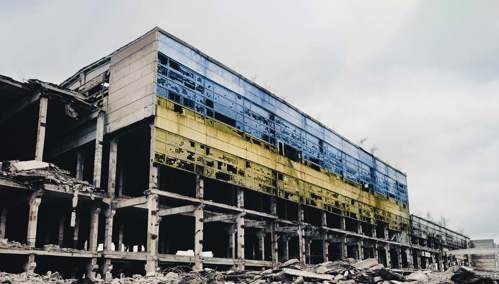Global Ophthalmology
Ophthalmic Care in Conflict
Eye surgeons in Ukraine face almost insurmountable challenges

Roibeard O’hEineachain
Published: Saturday, April 1, 2023
“ The many challenges for the eye departments in Ukraine include facility destruction, clinic occupation, material and equipment destruction, and the loss of medical staff and ancillary personnel such as engineers and accountants. “
Amidst the chaos of war, eye surgeons in Ukraine are fighting a heroic battle against blindness with depleted facilities and loss of personnel, said Dr Lyubomyr Lytvynchuk.
“As cataract surgeons, trauma surgeons, vitreoretinal surgeons, and plastic surgeons, we have to forget about quick and minimally invasive surgeries—there are multiple difficult cases [every] day.”
The many challenges for the eye departments in Ukraine include facility destruction, clinic occupation, material and equipment destruction, and the loss of medical staff and ancillary personnel such as engineers and accountants. There are also additional costs to maintain clinic security.
At the time of his presentation, 927 medical institutions had been damaged or destroyed. Some 127 medical facilities—including eye departments—were completely destroyed. The most affected medical infrastructure has been in Kyiv, Chernihiv, Donetsk, Mykolaiv, Kharkiv, and Kherson.
“In the past 10 years, many experienced surgeons in trauma moved to private departments, so at the beginning of the war, the civil medical healthcare was paralysed, and many doctors went abroad,” he explained. “Many went to western Ukraine, and normal medical service was not possible.”
The National Military Hospital in Kyiv is currently playing a major part in coordinating medical and ophthalmic healthcare in the region. A report of their experience dealing with the Russo-Ukrainian conflict from 2014 to 2019 provides a picture of the kind of injuries they are dealing with, Dr Lytvynchuk said.
The overall incidence of ocular trauma has been 7% to 8%. Around half of ophthalmic injuries were the result of mines and other explosives, a further 40% were due to shrapnel wounds, around 9% were due to bullet wounds, and the remaining injuries were the result of blunt trauma. Approximately two-thirds of ocular injuries were in combination with other injuries: skull and brain (31.9 %); ear, nose, and throat (15.6 %); maxillofacial (15.6%); and limb (23.7%).
Surgeons saw perforating eye injuries in 71.9% of cases and perforating eye injuries with intraocular foreign bodies in 43.8%. The injuries were bilateral in 21.8%—resulting in unilateral blindness in 28.1% and bilateral blindness in 9.4%— and often required multistage reconstructive surgery.
“Very often, there is bilateral trauma requiring surgery on both eyes. The surgery lasts longer. Vitreoretinal surgery can last two to seven hours and includes reconstructive surgeries,” Dr Lytvynchuk reported. “We [returned] to 20-gauge vitrectomy because [of the difficulty removing] some of the foreign bodies with 23- and 25-gauge instruments.”
In many cases, he said, surgeons must combine different techniques for both the anterior and posterior segments, including temporary keratoprostheses to improve visualisation because of opacified optic media. The complex posterior segment surgery involves bimanual techniques, and very often, the eye remains in a state of post-traumatic aphakia and aniridia.
“The surgeon has to have the skills of a posterior segment surgeon and an oculoplastic surgeon,” Dr Lytvynchuk explained. “Despite our best efforts, some cases will fail. There is a high risk of intraocular hypotony with development of phthisis bulbi and secondary optic nerve atrophy.”
After the initial stages of surgery, patients are often trans- ported to centres in countries such as Germany, Poland, the United Kingdom, Canada, and the United States. In addition, since the early days of the conflict, European ophthalmic organisations—including the ESCRS and the German Ophthalmological Society (DOG)—have provided medical supplies and equipment to Ukraine.
“In spite of the damage done to our country, we will fight on to defend it,” he concluded. “As a Ukrainian ophthalmologist living in the western part of Europe, I am obliged to fight on and assist our colleagues in Ukraine. And I would like to thank the ESCRS for the great help they have organised for us.”
Dr Lytvynchuk spoke at the 40th Congress of the ESCRS in Milan.
Lyubomyr Lytvynchuk MD, PhD is based at Justus-Liebig-University, Giessen, Germany. Lyubomyr.Lytvynchuk@augen.med.uni-giessen.de
